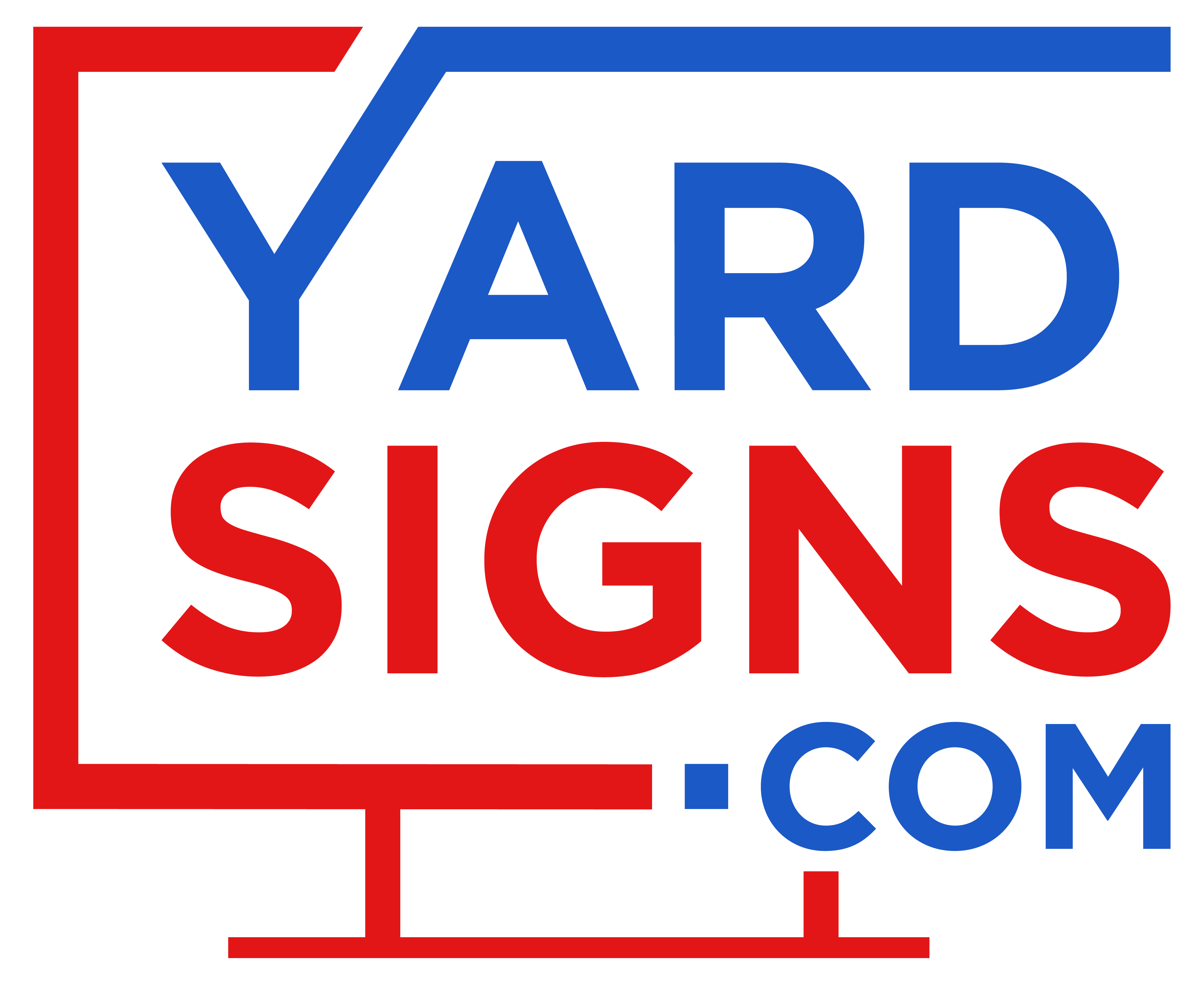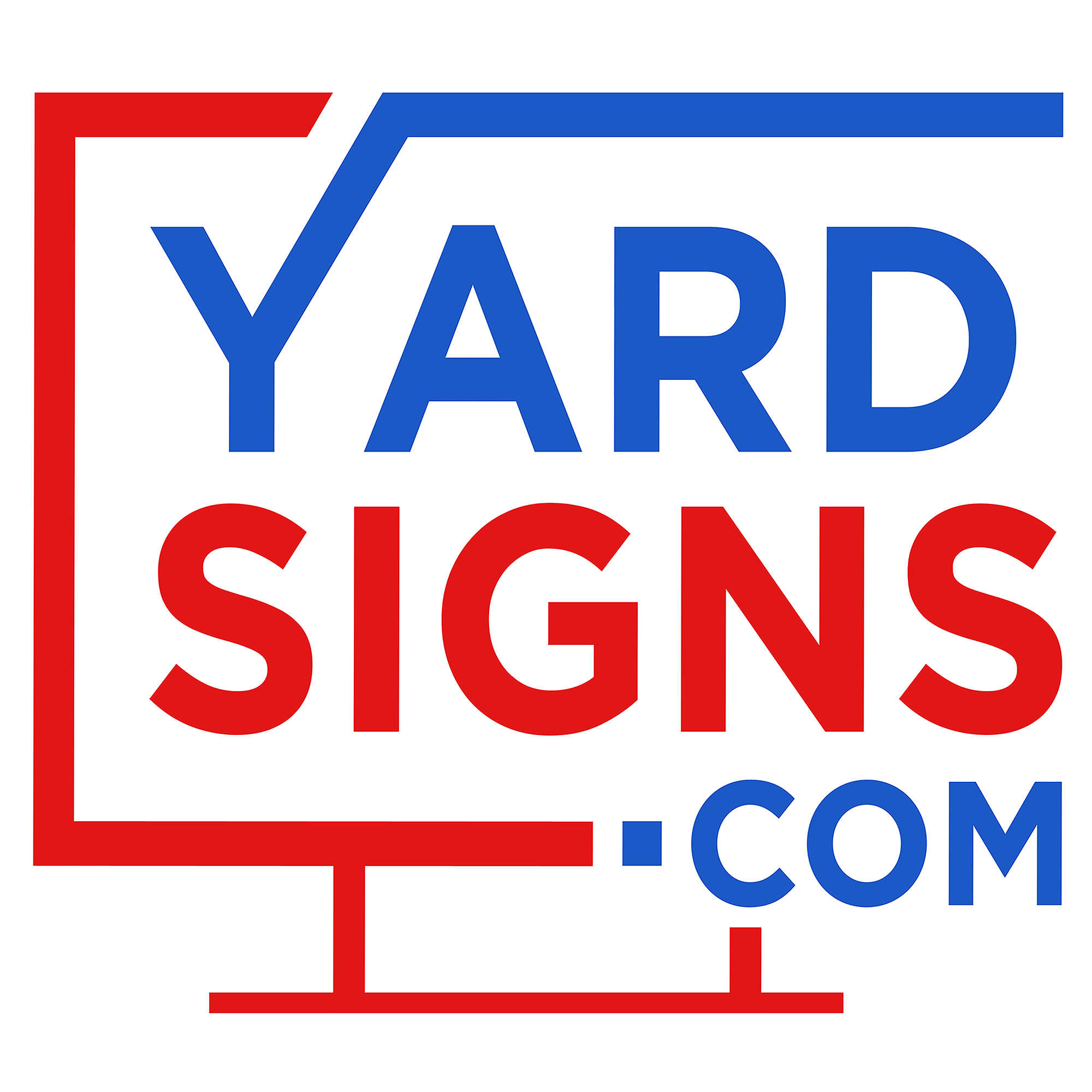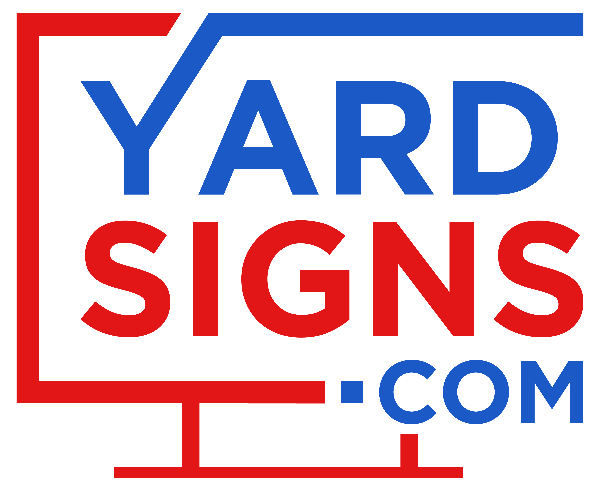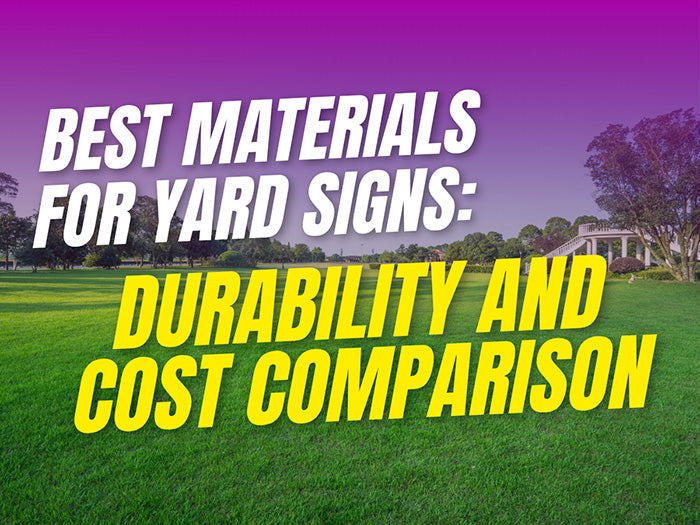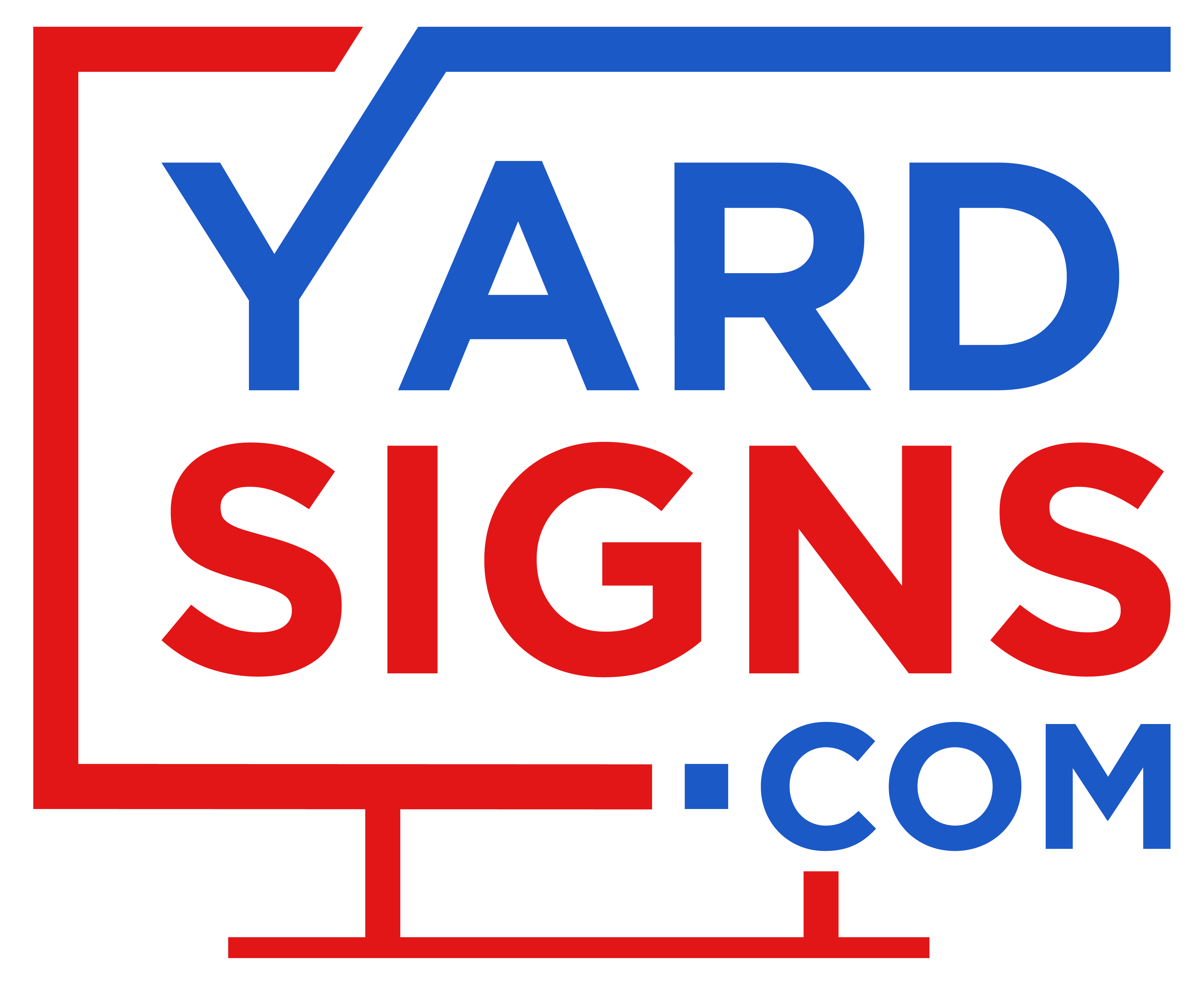Yard signs are used for many purposes, including real estate listings, political campaigns, business promotions, school events, and personal celebrations. They are commonly placed outdoors, so the material chosen directly affects how long the sign lasts and how it performs in different environments.
Each yard sign material has specific qualities related to strength, appearance, weight, and cost. Some are designed for short-term use, while others are built to last for years. Understanding these differences helps match the right material to the intended purpose.
This article compares the most widely used yard sign materials based on durability, cost, and performance for outdoor use.
What is the best material for yard signs?
The best material for yard signs depends on how long the sign needs to last, the weather conditions it will face, and your budget. Common materials include corrugated plastic, aluminum, PVC, and poly coated paperboard. Each material has distinct characteristics that make it suitable for specific uses.
A yard sign is a flat sign designed for outdoor display, often supported by a metal stake or frame. It's printed with a message or design intended to be seen by pedestrians or drivers. Depending on the material, yard signs can be temporary or semi-permanent.
The four main materials used for yard signs are:
- Corrugated plastic (Coroplast): A lightweight, fluted plastic material commonly used for political campaigns, real estate listings, and events. It lasts 1-2 years outdoors.

-
Aluminum: A rust-proof metal used for long-term business signage or permanent displays. Lasts 5+ years outdoors.

-
PVC (Polyvinyl Chloride): A rigid plastic sheet used for semi-permanent signs with a professional appearance. It lasts 2-3 years outdoors.
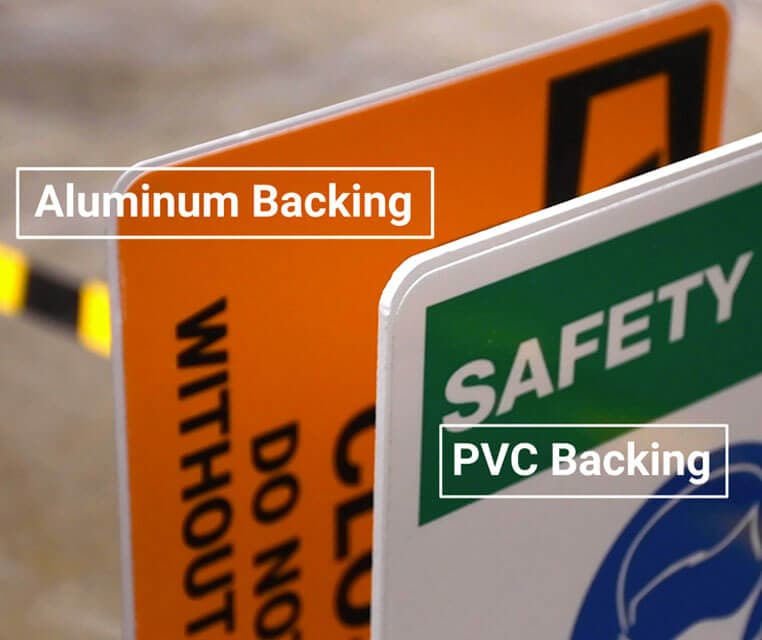
-
Poly coated paperboard: Paper with a plastic coating for moisture resistance, used for short-term signs or indoor displays. It lasts a few months outdoors.

Choosing the right exterior sign material involves balancing durability, cost, and appearance based on your specific needs.
Factors that affect exterior sign materials
When selecting outdoor signage materials, several key factors determine which option will work best for your specific situation.
1. Local climate conditions
Weather directly impacts how long different sign materials last outdoors:
- UV exposure: Sunlight causes colors to fade over time, especially on less expensive materials
- Moisture: Rain, snow, and humidity can warp or deteriorate certain materials
- Wind: Strong winds can bend or damage signs that lack structural strength
Corrugated plastic and aluminum perform well in wet or windy climates. PVC works in moderate weather but may warp in extreme heat. Poly coated paperboard is best for dry areas or indoor use.
2. Budget and quantity
Material costs vary significantly, which matters especially for bulk orders:
|
Material |
Cost per sign |
Best for |
|
Corrugated plastic |
$2–$5 |
Large quantities, temporary use |
|
Aluminum |
$15–$30 |
Long-term, premium signage |
|
PVC |
$10–$20 |
Medium-term, professional look |
|
Poly coated paperboard |
$1–$3 |
Very short-term, budget options |
These prices reflect standard sizes (18×24 inches) and may change based on customization, quantity, and printing complexity.
3. Desired lifespan
Each sign material type has a general outdoor durability range:
- Corrugated plastic: 1–2 years
- Aluminum: 5+ years
- PVC: 2–3 years
- Poly coated paperboard: 1–3 months
For short political campaigns or event announcements, temporary materials work fine. For business signage meant to last years, more durable options make sense despite higher upfront costs.
4. Branding and appearance
The material you choose affects how professional your sign looks:
- Aluminum and PVC offer smooth finishes with vibrant color reproduction
- Corrugated plastic provides good print quality for most applications
- Poly coated paperboard supports basic printing for temporary signs
For high-end branding, premium materials create a more professional impression. For functional, short-term messaging, simpler materials often suffice.
Comparing common yard sign materials
Understanding the strengths and limitations of each material helps you make an informed choice for your outdoor signage.
1. Corrugated plastic
Corrugated plastic (often called Coroplast) is a lightweight, fluted polypropylene sheet with a ribbed interior structure that provides strength while keeping it lightweight.
Key benefits:
- Affordable for bulk orders
- Lightweight and easy to transport
- Weather-resistant for 1-2 years
- Works well with wire stakes for quick installation
Limitations:
- Can bend in strong winds
- May warp with prolonged sun exposure
- Less premium appearance than metal options
Corrugated plastic is ideal for political campaigns, real estate signs, temporary business promotions, and event announcements where cost and ease of installation matter more than long-term durability.
2. Aluminum
Aluminum signs are made from thin metal sheets, sometimes with a baked enamel finish for added durability and better print adhesion.
Key benefits:
- Exceptional durability (5+ years outdoors)
- Rust-proof and fade-resistant
- Professional, high-end appearance
- Can be updated with vinyl overlays
Limitations:
- Higher upfront cost
- Heavier than plastic options
- Requires more substantial mounting hardware
Aluminum is perfect for permanent business signs, directional signage, parking signs, and any application where long-term performance justifies the higher initial investment.
3. PVC
PVC (polyvinyl chloride) is a rigid plastic sheet with a smooth surface that accepts printing well and maintains its shape better than corrugated plastic.
Key benefits:
- More rigid than corrugated plastic
- Professional appearance with smooth finish
- Good print quality with vibrant colors
- Moderate weather resistance (2-3 years)
Limitations:
- Can become brittle in very cold temperatures
- May warp in extreme heat
- More expensive than corrugated plastic
PVC works well for semi-permanent retail displays, business signs, and situations where a more professional appearance is needed without the cost of aluminum.
4. Poly coated paperboard
Poly coated paperboard consists of paper with a thin plastic coating that provides limited moisture resistance.
Key benefits:
- Very low cost
- Lightweight and easy to handle
- Good for indoor or short-term outdoor use
- Environmentally friendly (often recyclable)
Limitations:
- Limited durability outdoors (1-3 months)
- Vulnerable to rain and wind
- Less professional appearance
This material is best for indoor events, temporary sales, short promotional periods, or any situation where the sign only needs to last briefly.
How long do different outdoor sign materials last?
The lifespan of outdoor sign materials varies based on environmental factors and material quality. Here's what to expect in typical conditions:
Corrugated plastic: 1-2 years outdoors. This material holds up reasonably well to rain and moderate sun exposure but may begin to fade or warp after extended UV exposure. The fluted structure helps it resist wind when properly mounted.
Aluminum: 5+ years outdoors. As a metal, aluminum doesn't deteriorate from moisture and resists UV fading much better than plastic options. It maintains structural integrity through multiple seasons and weather cycles.
PVC: 2-3 years outdoors. More durable than corrugated plastic but less so than aluminum. PVC maintains its appearance longer but can become brittle in cold climates or warp in areas with extreme heat.
Poly coated paperboard: 1-3 months outdoors. The thin plastic coating provides minimal protection against moisture, making this material suitable only for short-term outdoor use or indoor applications.
Weather conditions dramatically affect these timeframes. Signs in harsh environments with intense sun, frequent rain, or strong winds deteriorate faster than those in milder climates.
Tips for maximizing yard sign visibility
The right material is only part of creating an effective yard sign. How you design and place your sign also affects its impact.
1. Design using high contrast colors
Different materials display colors differently:
- Aluminum and PVC provide the sharpest, most vibrant print quality
- Corrugated plastic offers good color reproduction but slightly less detail
- Poly coated paperboard has the most limited color range and detail
For maximum visibility, use high-contrast color combinations like black on yellow, white on blue, or red on white. These combinations read well from a distance regardless of material.
2. Elevate the sign off the ground
Proper mounting helps your sign stay visible and intact:
- Corrugated plastic works well with H-stakes or wire frames
- Aluminum typically requires metal posts or frames due to its weight
- PVC can use similar mounting to aluminum but may need less robust supports
- Poly coated paperboard uses simple stakes or tape for temporary placement
Mounting your sign 2-3 feet off the ground improves visibility for both pedestrians and drivers while reducing exposure to splashing water and ground moisture.
3. Ensure weatherproof outdoor signs material
To maximize durability:
- Use UV-resistant inks on all outdoor materials
- Consider protective coatings for extended outdoor use
- Choose materials appropriate for your local climate
- Position signs to minimize direct exposure to harsh elements
Even the most durable materials last longer when properly treated and positioned to reduce environmental stress.
Our take on finding the right yard sign
At Yardsigns, we believe the best material for your yard sign depends on your specific needs. For short-term use like political campaigns or event announcements, corrugated plastic offers the best value. For long-lasting business signage, aluminum provides superior durability despite higher upfront costs. PVC offers a middle ground for semi-permanent applications with a professional look.
We offer all major sign materials to fit any project requirement. Our corrugated plastic signs come with optional UV-resistant inks for extended outdoor use. Our aluminum signs feature baked enamel finishes for maximum durability. Our PVC and poly coated paperboard options round out our selection for specialized applications.
Ready to get started? Order your custom yard sign today at www.yardsigns.com.
FAQs about yard sign materials
How do I store my yard signs safely?
Store yard signs flat in a cool, dry place away from direct sunlight. Avoid stacking heavy items on plastic signs to prevent warping.
Can I recycle my used yard signs?
Corrugated plastic and aluminum signs are recyclable in most areas. Check local recycling guidelines for specific instructions on how to properly dispose of sign materials.
Is there a material that can withstand extreme heat or cold?
Aluminum is the most resistant to temperature extremes. It won't warp in heat or become brittle in cold like plastic materials can.
What sign material offers the best print quality?
Aluminum and PVC provide the highest print quality with sharp details and vibrant colors. Corrugated plastic offers good quality for most applications.
How do I choose between aluminum and corrugated plastic for my business signs?
Choose aluminum for long-term use (5+ years) and professional appearance. Select corrugated plastic for temporary needs (1-2 years) and budget-friendly options.
